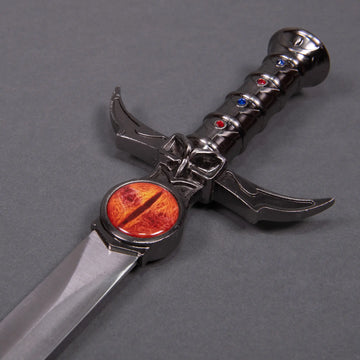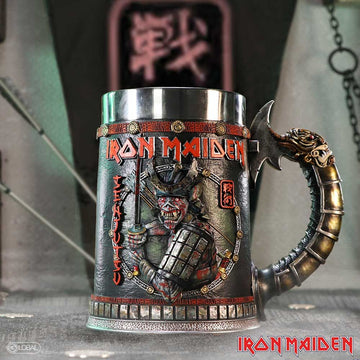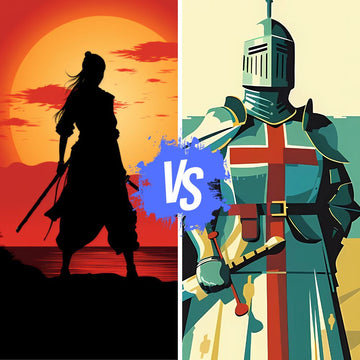Throughout history, the idea of a hypothetical battle between legendary warriors has captivated the imagination. One of the most popular and debated matchups is the Knight vs Samurai. Both are iconic figures from vastly different cultures, yet they share a common reputation for being formidable warriors. But the burning question remains: who would win in a fight between a European Knight and a Japanese Samurai?
This comparison will explore their training, equipment, fighting styles, and historical contexts to determine which warrior might come out on top.
Historical Context and Background
To truly understand the Knight and Samurai, it's essential to consider the historical periods and regions they hailed from. Medieval Knights were prominent in Europe from the 9th to the 15th century, serving as heavily armoured cavalry in feudal societies. They were bound by the code of chivalry, which emphasised bravery, honour, and protection of the weak.
In contrast, Samurai warriors dominated Japan from the 12th to the 19th century, during the feudal era. Governed by the bushido code, which stressed loyalty, martial arts mastery, and honour, Samurai were the military elite and often served as both warriors and local rulers.
The environments and cultures that shaped these warriors were vastly different, influencing their combat styles, weaponry, and tactics.
Training and Combat Skills
Both Knights and Samurai underwent rigorous training from a young age. Knights trained in various historical weapons, including the longsword, lance, and shield, as well as in mounted combat. They also participated in tournaments, where they honed their skills in jousting and melee combat.
On the other hand, Samurai training was deeply rooted in martial arts such as Kenjutsu (swordsmanship) and Kyudo (archery). They were equally skilled in the use of the katana, yumi (bow), and yari (spear), with an emphasis on precision, discipline, and agility.
The codes of chivalry and bushido played crucial roles in shaping the combat styles and tactics of these warriors, guiding their actions both on and off the battlefield.
Armour and Weapons
When it comes to armour, Knights and Samurai were equipped to suit their respective combat environments. Knight armour was typically made of steel plates, providing exceptional protection against blunt and edged weapons. Their primary weapons included the longsword, which was ideal for slashing and thrusting, and the lance for devastating charges on horseback.
In contrast, Samurai armour was lighter, made from a combination of leather, iron, and lacquered plates, allowing for greater mobility. The katana, with its razor-sharp edge, was the Samurai’s weapon of choice, renowned for its cutting power and craftsmanship. They also carried the yumi, a powerful longbow, and the yari, a versatile spear used in both thrusting and slashing.
The effectiveness of Samurai armour vs Knight armour would be a key factor in determining the outcome of a direct confrontation.
Fighting Styles and Tactics
Knights were known for their heavy cavalry charges, using their armour and horses to dominate open battlefields. Their fighting style relied on strength, endurance, and the ability to deliver powerful blows with their longswords or crush enemies with their lances during a charge.
Samurai combat, on the other hand, was characterised by agility, precision, and a strong emphasis on one-on-one duels. The Samurai's katana was not just a weapon but an extension of the Samurai's soul, wielded with techniques designed to end a fight quickly and decisively. Samurai tactics also involved the strategic use of terrain, often employing ambushes and hit-and-run attacks.
The contrast between Knight tactics and Samurai martial arts would create a fascinating dynamic in any battle scenario, with terrain and battlefield conditions playing a significant role.
Hypothetical Battle Scenarios
Scenario 1: Open Field Battle
In an open field, the Knight would likely have the advantage due to their heavy armour and powerful cavalry charge. The sheer force of a Knight’s charge, combined with the protection of their armour, could overwhelm a Samurai before they have a chance to fully engage.
Scenario 2: Castle Siege
In a castle siege, the Samurai’s agility and precision might give them the edge. Samurai were trained in siege warfare and could use their yumi to pick off enemies from a distance. Their lighter armour would allow them to move swiftly and avoid heavy attacks from the Knights.
Scenario 3: Forest Encounter
A forest encounter would level the playing field, with the Samurai’s knowledge of guerrilla tactics and ambushes becoming invaluable. The Knight's heavy armour would be a disadvantage in such terrain, as it would limit their mobility and make them easier targets for the Samurai’s hit-and-run tactics.
In each of these scenarios, the environment and circumstances would heavily influence the outcome, showcasing the strengths and weaknesses of both warriors.
In the end, the question of who would win in a fight between a Knight and a Samurai is as much about the circumstances as it is about the warriors themselves. Both were products of their unique cultures and environments, each with their own strengths and skills.
While a Knight may have the upper hand in a straightforward clash, the Samurai’s agility, precision, and tactical prowess could easily tip the balance in their favour under the right conditions. So... overall we are awarding the final victory to the Samurai!
Ultimately, it’s a matchup that will continue to fuel the imaginations of history enthusiasts and speculative fans alike!






